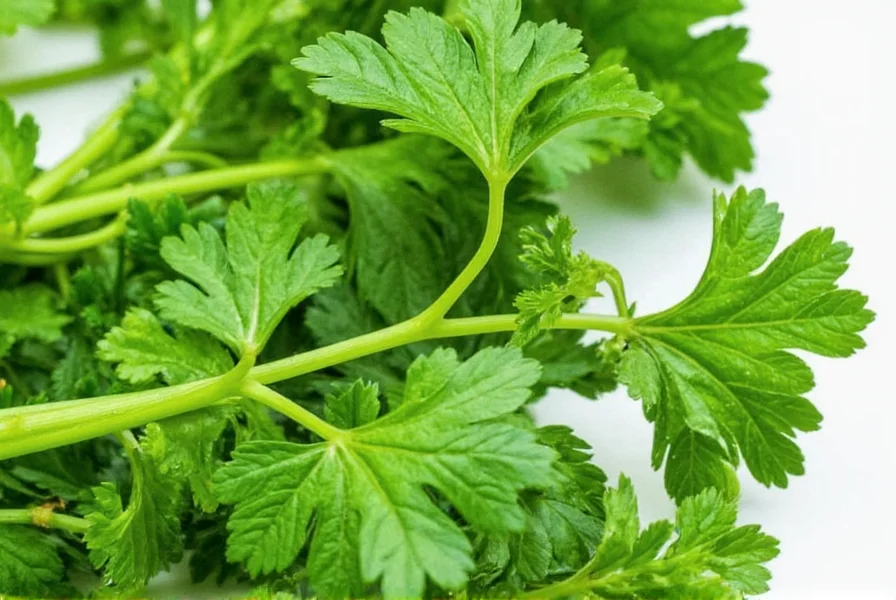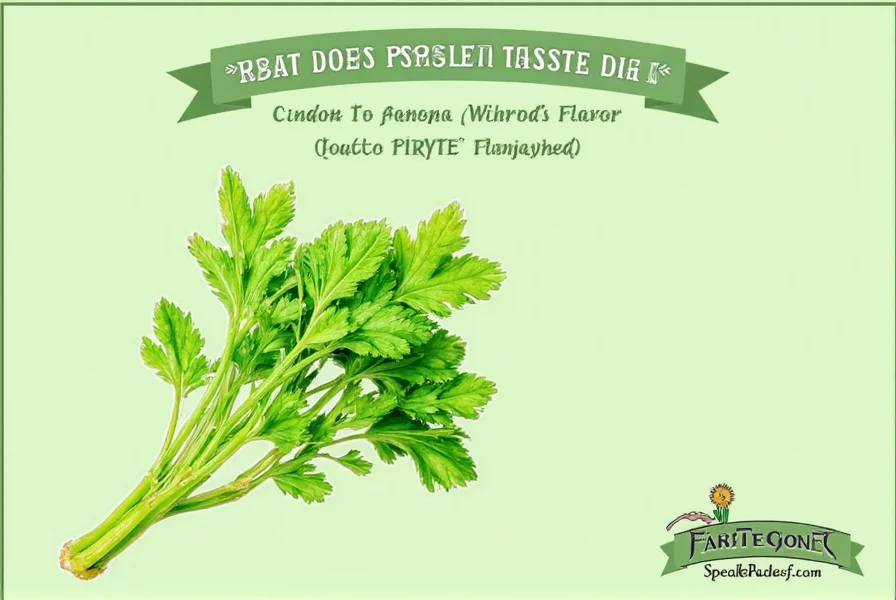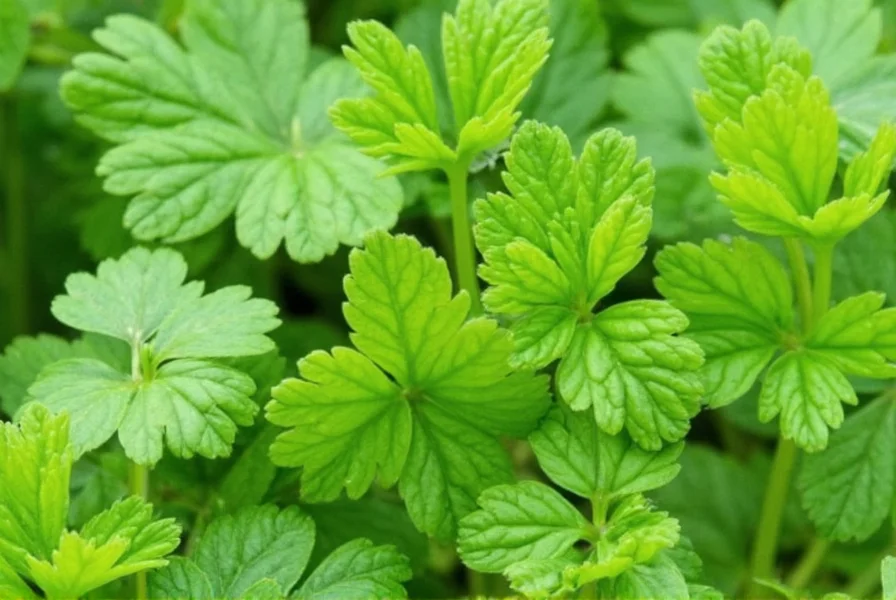Understanding what does parsley taste like requires experiencing its unique flavor profile that sits between mild bitterness and refreshing brightness. This common culinary herb serves as a flavor bridge in countless dishes worldwide, yet many home cooks underestimate its distinctive contribution to cuisine.
The Complete Flavor Profile of Parsley
When evaluating what does fresh parsley taste like, consider these key characteristics:
- Primary taste: Mild bitterness with grassy, green notes
- Secondary notes: Subtle peppery undertones and a clean, refreshing finish
- Aroma: Fresh, slightly floral with green vegetal notes
- Mouthfeel: Crisp texture that releases flavor when chewed
- Aftertaste: Clean, slightly cooling sensation that lingers briefly
Unlike more aggressive herbs like rosemary or thyme, parsley provides a balanced flavor that complements rather than dominates. Its taste profile makes it ideal as both a garnish and integral ingredient in sauces, soups, and salads. Many people wonder is parsley bitter or sweet—the answer lies in its mild bitterness that's balanced by fresh, green notes rather than sweetness.
Flat-Leaf vs. Curly Parsley: Taste Differences
Not all parsley varieties taste identical. Understanding what does Italian parsley taste like compared to curly parsley reveals important culinary distinctions:
| Characteristic | Flat-Leaf (Italian) Parsley | Curly Parsley |
|---|---|---|
| Flavor intensity | Bolder, more robust | Milder, more delicate |
| Bitterness level | Moderate | Slightly less bitter |
| Peppery notes | More pronounced | Subtler |
| Culinary use | Ideal for cooking | Better for garnish |
Chefs generally prefer flat-leaf parsley for cooking because its stronger flavor holds up better during preparation. Curly parsley's milder taste makes it excellent as a garnish where you want visual appeal without overwhelming flavor. When exploring how would you describe parsley taste in cooking applications, the flat-leaf variety delivers more pronounced herbal notes that enhance complex dishes.

How Cooking Changes Parsley's Flavor
Raw parsley offers the most vibrant flavor experience, but understanding what does parsley taste like when cooked is essential for culinary applications. When exposed to heat:
- Raw: Bright, grassy notes with noticeable freshness
- Lightly cooked: Mellowed bitterness with enhanced herbal qualities
- Long cooking: Flavor diminishes significantly, becoming more subtle
For maximum flavor impact, add parsley toward the end of cooking. This preserves its distinctive taste profile while allowing it to blend with other ingredients. In dishes like tabbouleh or chimichurri, raw parsley provides the dominant flavor note that defines the dish.
Parsley Compared to Similar Herbs
Many people confuse parsley with cilantro, but their flavor profiles differ significantly. Understanding what does parsley taste like compared to cilantro helps prevent recipe mistakes:
- Parsley: Mild bitterness, grassy, clean finish (no soapy notes)
- Cilantro: Citrusy, pungent, with potential soapy notes for some people
- Celery leaves: Similar vegetal quality but more pronounced saltiness
- Basil: Sweet, anise-like notes with less bitterness
Unlike cilantro, which divides palates with its polarizing flavor, parsley offers a universally appealing taste that works across diverse cuisines. This makes it one of the most versatile herbs in the culinary world.

Common Misconceptions About Parsley's Taste
Several myths persist about parsley's flavor profile. Let's clarify:
- Misconception: Parsley is flavorless and only used as garnish
Reality: It has a distinct flavor profile that enhances dishes when used properly - Misconception: All parsley tastes the same
Reality: Flat-leaf and curly varieties have noticeable flavor differences - Misconception: Parsley tastes bitter to everyone
Reality: Bitterness perception varies by individual and preparation method
Maximizing Parsley's Flavor in Cooking
To fully appreciate what does fresh parsley taste like in your dishes, follow these tips:
- Use flat-leaf parsley for cooking applications where flavor matters most
- Add toward the end of cooking to preserve fresh flavor notes
- Chop finely to release maximum flavor compounds
- Pair with acidic ingredients like lemon juice to balance bitterness
- Store properly in damp paper towels to maintain freshness and flavor
When used intentionally rather than as an afterthought, parsley transforms from a simple garnish to a flavor component that elevates entire dishes. Its clean, refreshing quality cuts through rich flavors while adding complexity without overwhelming other ingredients.
Why Parsley's Taste Matters in Global Cuisines
Parsley's unique flavor profile explains its prominence across culinary traditions. In Mediterranean cooking, it forms the base of gremolata and persillade. Middle Eastern cuisines feature it prominently in tabbouleh and za'atar blends. Understanding what does parsley taste like in these contexts reveals why it's indispensable—its ability to provide freshness without dominating allows it to complement diverse flavor profiles.
Frequently Asked Questions
Does parsley taste bitter to everyone?
No, bitterness perception varies among individuals. While parsley has mild bitter notes, some people detect more grassy or peppery qualities. Genetics influence how we perceive certain compounds in herbs, and preparation methods (like pairing with acid) can reduce perceived bitterness.
Why does parsley taste different from cilantro?
Parsley and cilantro belong to different plant families with distinct chemical compositions. Parsley contains apiol and myristicin compounds that create its mild bitterness and grassy notes, while cilantro's aldehydes produce its citrusy, sometimes soapy flavor. This fundamental chemical difference explains why what does parsley taste like compared to cilantro varies so significantly.
Does cooking parsley change its taste significantly?
Yes, heat transforms parsley's flavor profile. Raw parsley offers bright, grassy notes with noticeable freshness. When cooked, especially for extended periods, it loses much of its distinctive character and becomes more subtle. For maximum flavor impact, add parsley during the final minutes of cooking or use it raw in finishing sauces and salads.
Why do some people think parsley tastes like nothing?
This usually happens when parsley is used improperly—as a tired garnish added long after cooking. Fresh, properly used parsley has a definite flavor. When people say what does parsley taste like and get no answer, it's often because they've only experienced old, dried-out parsley that's lost its volatile flavor compounds. Quality and preparation method dramatically affect perceived taste.
Can you taste the difference between flat-leaf and curly parsley?
Absolutely. Flat-leaf (Italian) parsley has a bolder, more robust flavor with pronounced peppery notes, making it better for cooking. Curly parsley offers a milder, slightly sweeter taste that works well as garnish. When exploring what does Italian parsley taste like compared to curly parsley, the difference becomes apparent in both raw and cooked applications.











 浙公网安备
33010002000092号
浙公网安备
33010002000092号 浙B2-20120091-4
浙B2-20120091-4